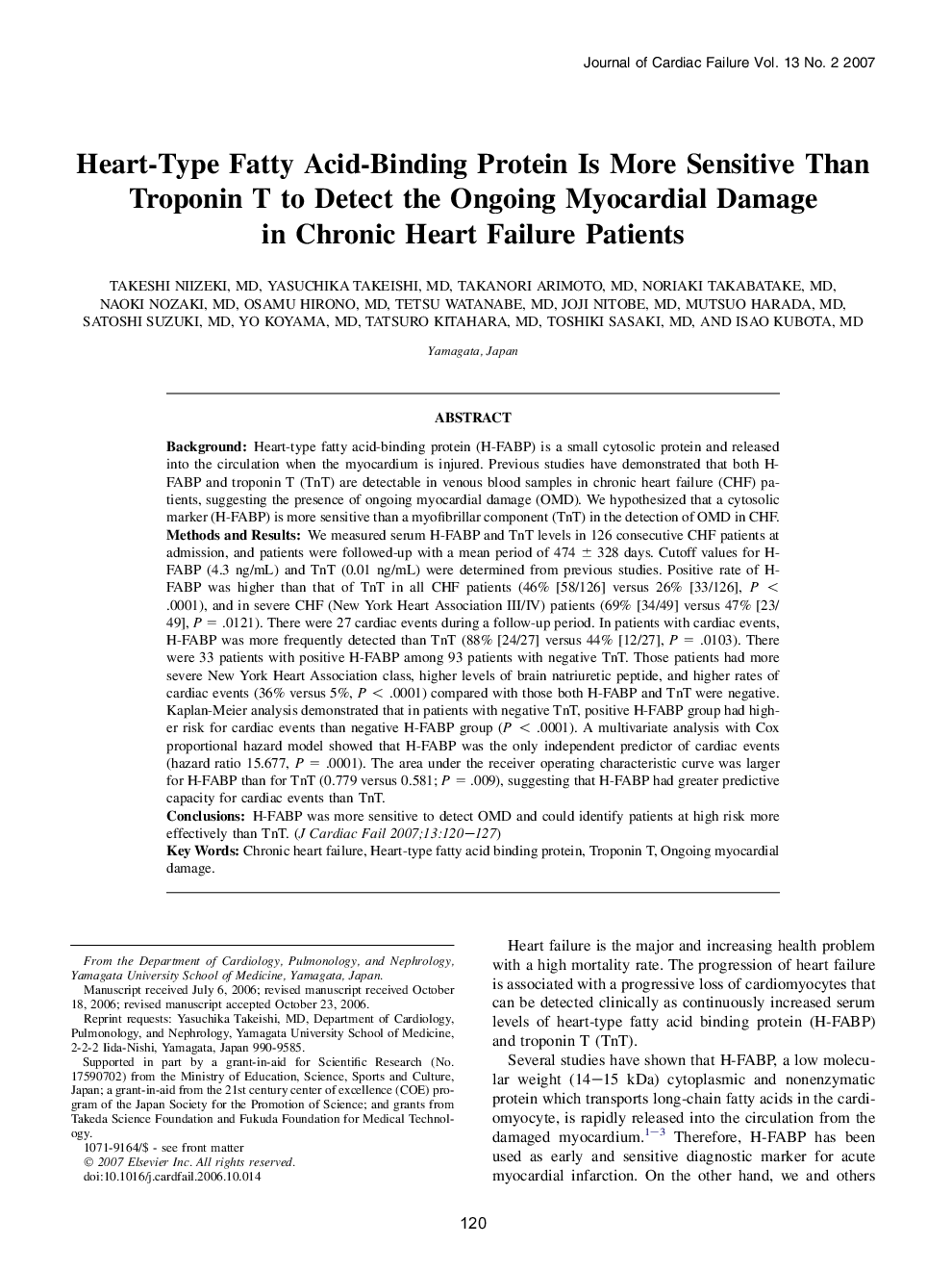| کد مقاله | کد نشریه | سال انتشار | مقاله انگلیسی | نسخه تمام متن |
|---|---|---|---|---|
| 2962564 | 1178437 | 2007 | 8 صفحه PDF | دانلود رایگان |

BackgroundHeart-type fatty acid-binding protein (H-FABP) is a small cytosolic protein and released into the circulation when the myocardium is injured. Previous studies have demonstrated that both H-FABP and troponin T (TnT) are detectable in venous blood samples in chronic heart failure (CHF) patients, suggesting the presence of ongoing myocardial damage (OMD). We hypothesized that a cytosolic marker (H-FABP) is more sensitive than a myofibrillar component (TnT) in the detection of OMD in CHF.Methods and ResultsWe measured serum H-FABP and TnT levels in 126 consecutive CHF patients at admission, and patients were followed-up with a mean period of 474 ± 328 days. Cutoff values for H-FABP (4.3 ng/mL) and TnT (0.01 ng/mL) were determined from previous studies. Positive rate of H-FABP was higher than that of TnT in all CHF patients (46% [58/126] versus 26% [33/126], P < .0001), and in severe CHF (New York Heart Association III/IV) patients (69% [34/49] versus 47% [23/49], P = .0121). There were 27 cardiac events during a follow-up period. In patients with cardiac events, H-FABP was more frequently detected than TnT (88% [24/27] versus 44% [12/27], P = .0103). There were 33 patients with positive H-FABP among 93 patients with negative TnT. Those patients had more severe New York Heart Association class, higher levels of brain natriuretic peptide, and higher rates of cardiac events (36% versus 5%, P < .0001) compared with those both H-FABP and TnT were negative. Kaplan-Meier analysis demonstrated that in patients with negative TnT, positive H-FABP group had higher risk for cardiac events than negative H-FABP group (P < .0001). A multivariate analysis with Cox proportional hazard model showed that H-FABP was the only independent predictor of cardiac events (hazard ratio 15.677, P = .0001). The area under the receiver operating characteristic curve was larger for H-FABP than for TnT (0.779 versus 0.581; P = .009), suggesting that H-FABP had greater predictive capacity for cardiac events than TnT.ConclusionsH-FABP was more sensitive to detect OMD and could identify patients at high risk more effectively than TnT.
Journal: Journal of Cardiac Failure - Volume 13, Issue 2, March 2007, Pages 120–127